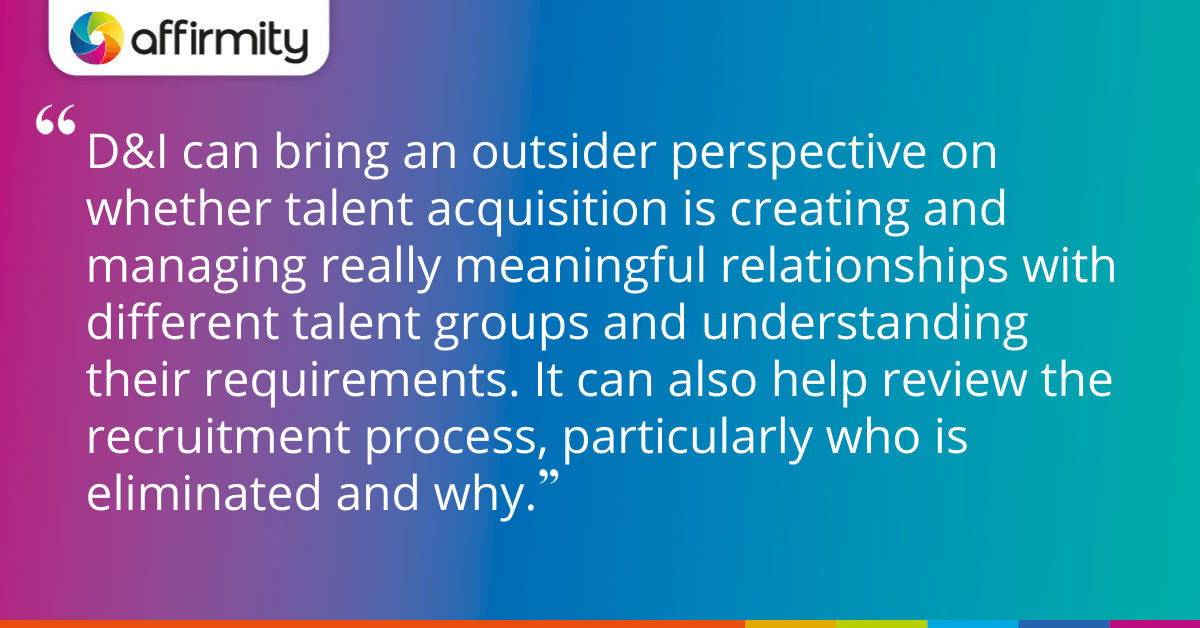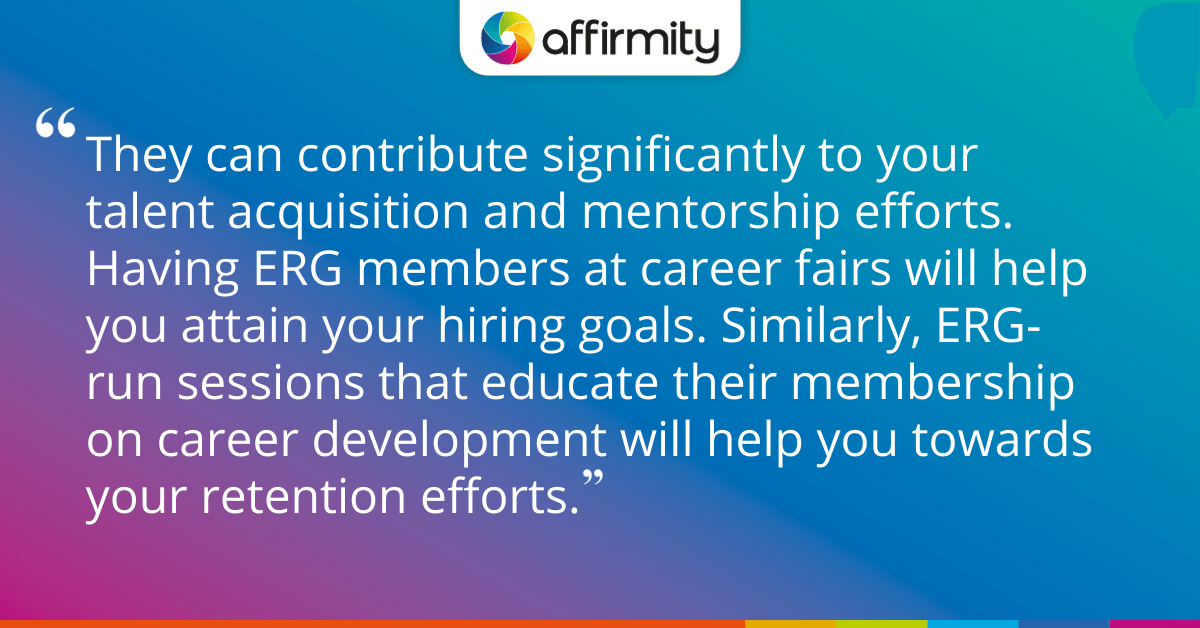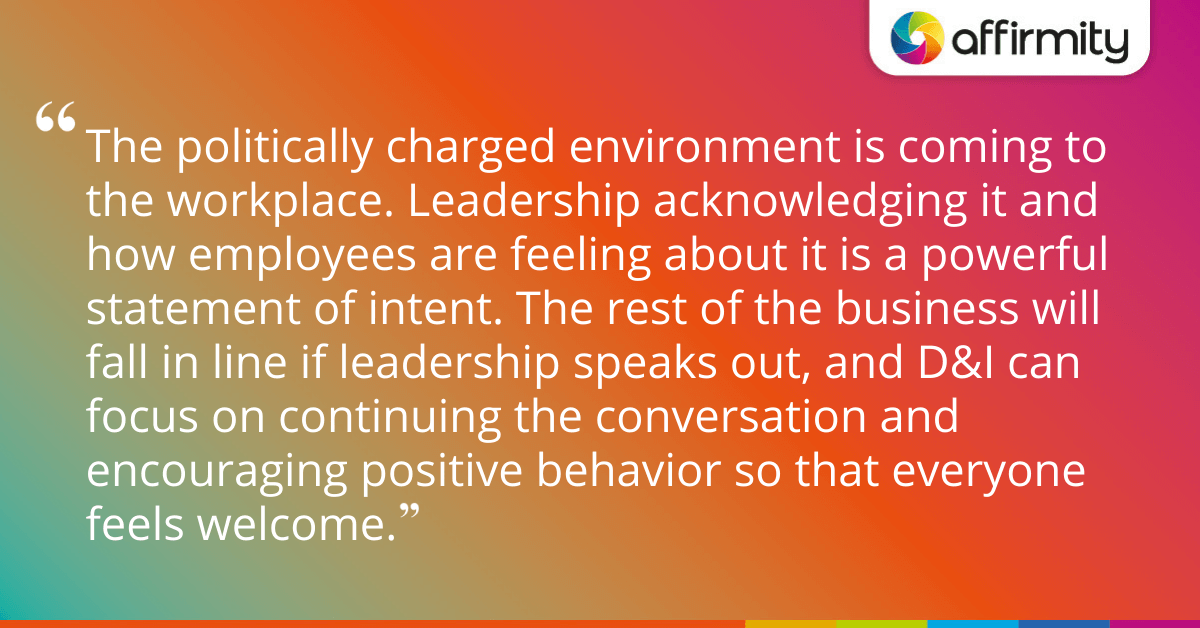Does your organization separate its business strategy from its diversity and inclusion (D&I) strategy? Businesses are increasingly realizing that D&I needs to be at the heart of their wider strategy if they are to succeed. In this article, we cover essential relationships for D&I professionals, the metrics and methods they require, and why now is the time to act.
Our ongoing panel webinar series recently covered the topic ‘Best Practices for Advancing Diversity & Inclusion Programs’. Guests this time included Lori Walker (VP Senior Diversity & Inclusion Consultant at Comerica), Joanna Abeyie (CEO and Founder, Blue Moon), and Jorge De La Jara (Director: Culture, Diversity & Inclusion at Lowe’s).
With over 50% of attendees just beginning to set up their D&I programs—and a good portion of the remainder stating that they need to redefine their programs—the panelist’s discussion covered a wide range of useful D&I topics and perspectives. Read on for four of the best insights.
1) D&I Needs Talent Acquisition

D&I must always seek a partnership with talent acquisition teams and avoid taking an antagonistic role—something that D&I teams risk if they focus on solely policing compliance rather than taking a more compassionate approach.
The message is that both teams will win if they work together, something that can be achieved by D&I offering to validate where recruitment teams are looking for talent. D&I can bring an outsider perspective on whether talent acquisition is creating and managing really meaningful relationships with different talent groups and understanding their requirements. It can also help the hiring team review the recruitment process, particularly who is eliminated and why.
By engaging with professional and industry bodies and spending lots of time making sure that there’s nothing in the recruitment process that can isolate or exclude people, both teams can reach their goals.
More on this topic: ‘6 Ways to Advance Your AAP Beyond Compliance’
2) Metrics Are Valuable but Remember, We’re Measuring People
Whatever metrics you choose, they should be aligned with your business strategy. For example, you may use interview goals, succession pipeline, and representation goals as your workforce diversity metrics.
Measuring your organization’s social impact? Track hours related to your volunteering initiative. If your business has a particular emphasis on connecting with customers and communities, you’ll need goals that reflect that.
Focusing on these strategy-aligned data points should keep organizations from getting into a state of analysis paralysis. Nonetheless, it’s important to remember that the data is fed by people’s lives, and there are limits to how people can be measured. This should prompt organizations to also seek qualitative metrics—asking employees how they’re feeling and providing them with an opportunity to speak out in internal or externally-run (confidential) focus groups. This can help validate the best practice suggested by quantitative metrics.
More from the blog: ‘How to Use a Climate Survey to Understand and Nurture Diversity and Inclusion’
3) ERGs Help Organizations Help Themselves

Employee Resource Groups (ERGs) are a great source of those qualitative metrics. Employees are incentivized by the opportunity to find community and a chance to have their voices heard, while you can learn about real issues that can inform your strategy. Leadership should be encouraged to attend ERG meetings informally—this can be a great opportunity to understand how people really feel.
The benefits of ERGs extend well beyond this, though. They can contribute significantly to your talent acquisition and mentorship efforts. Having ERG members at career fairs will help you attain your hiring goals. Similarly, ERG-run sessions that educate their membership on career development will help you towards your retention efforts. Note that increases in ERG attendance and activity can also indicate that a group is particularly affected by internal or external events and trends.
Discover more about ERGs: ‘Maximizing the Value of ERGs: Expert Answers to 7 Burning Questions’
4) There Really Is No Time Like the Present

D&I is a hot commodity right now. Topics such as white privilege, microaggressions, and white fragility have been mainstreamed. Long-overdue conversations are being had in our wider societies and many organizations across many industries are more conscious than ever about their role in that conversation. The current unrest and the legacy of tragic circumstances that lead to it have opened doors—D&I teams are in a unique position to offer answers, to take action, and to sustain the moment.
From the various town halls and open and frank discussions that have been had in countless organizations in recent months, there are some revealing patterns. While D&I is a charged topic, in businesses where leaders are encouraged to speak up on race, and to provide a space for voices from marginalized groups to share their own experiences and call for change, post-session feedback has been overwhelmingly positive.
The reality is that the politically charged environment is coming to the workplace. Leadership acknowledging it and how employees are feeling about it is a powerful statement of intent. The rest of the business will fall in line if leadership speaks out, and D&I can focus on continuing the conversation and encouraging positive behavior so that everyone feels welcome going forward.
Related content: ‘Social Injustice and How Companies Can Support Their Black Employees’
